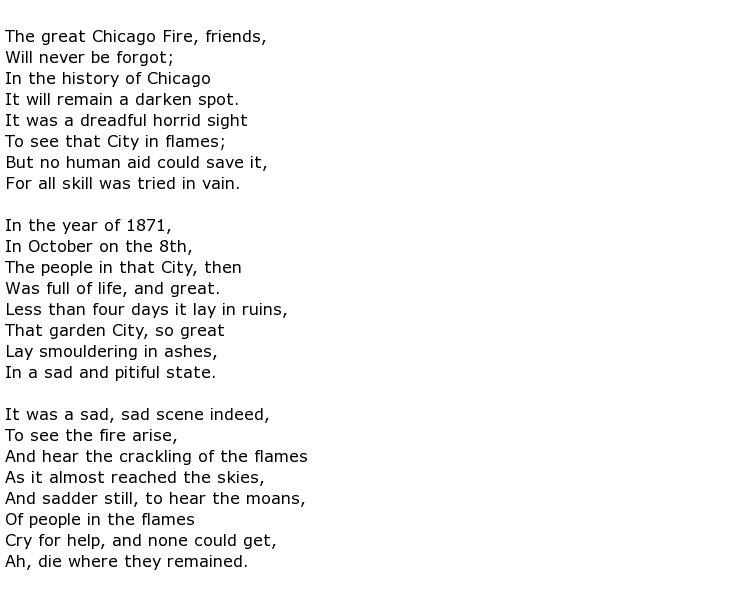 Julia A. Moore, also known as Julia Ann Moore and the
Julia A. Moore, also known as Julia Ann Moore and the

was an American poet. However she is better known by the derogatory term of “poetaster” which means that, like the Scottish William McGonagall, she perfected the art of writing “bad poetry”.
She was born Julia Ann Davis on the 1st December 1847 on the family farm in the Kent County, Michigan settlement of Plainfield Township. She had to grow up fast when, at the age of ten, she took on her ailing mother’s responsibility for looking after her three siblings. Understandably this impacted on her education but she seemed to have a love of, and a talent for, writing poetry which developed during her teenage years. She was an avid reader of newspapers and periodicals and many of the reported calamities that she read about gave her the inspiration to write a poem, or a song.
She was married to a farmer called Frederick Moore at the tender age of seventeen and, apart from bearing him ten children, she made a living running a small shop and somehow found the time to write more poetry. Her first collection of verse came out in 1876 under the title

and it sold well enough to warrant a second print run. Her nickname, as indicated above, came about when another publisher got hold of the book and re-published it with the title

This led to some kind of national recognition but not many reviews were kind. Literary reviewers mocked her style, albeit in a gentle way, though not always quite so gentle. For example, the reviewer in the

was particularly hurtful when he said that:

Despite such put-downs, and there were many, the book sold well. Maybe the reading public enjoyed Moore’s poems for their sentimental, old-fashioned style that were described as coming from the so-called school of

that had been popular in mid-19th century America. She was not spared from a degree of derision when she took to the stage to both recite and sing her poetry. For example, at an 1877 performance at the Grand Rapids Opera House, she heard some jeering from the audience but assumed they were criticising the musicians and not her.
As mentioned above, Moore liked to focus on real events, either recent or historical, and then write a poem or song about it. A good example, or perhaps I should say “bad” due to the fairly rudimentary poetic style, was her account of

Here are the opening verses to this poem:

She was a great supporter of the Temperance Movement and perhaps this “blue-stocking”, sometimes hectoring attitude turned some people against her. She was mocked by both reviewers and audiences but she took this in good heart and endeavoured to persist with her work. A second collection called

was published in 1878 but sold badly. Her husband did not like his wife’s status as a writer and they moved to Manton where she set up a successful retail business and life generally became more settled. Following his death in 1914, Julia published

for the second time, this time as a pamphlet.
She was not without admirers amongst her fellow writers though, these including men such as Mark Twain and Ogden Nash. Perhaps not intentionally she did manage to secure a place in a group of poets called the

Julia A. Moore died on the 5th June 1920 at the age of 72.

